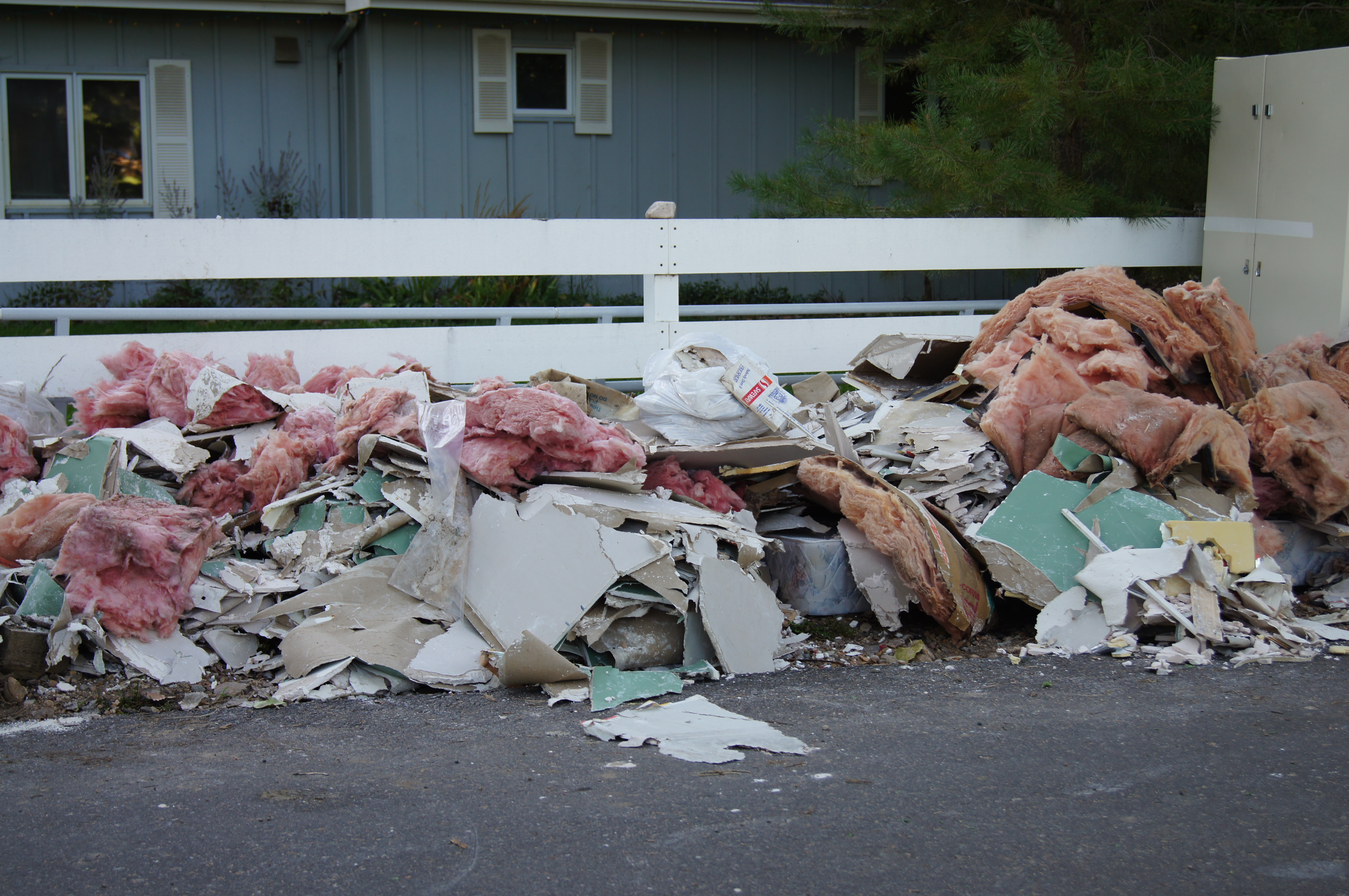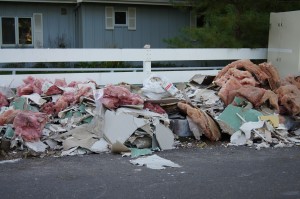
by Neil Kearney | Mar 13, 2014 | For Buyers, For Sellers, General Real Estate Advice, Real Estate 101, Uncategorized
Home ownership is a long term relationship. And just like other long term relationships in our lives, it needs constant attention and care.
Let’s imagine a typical situation. A family purchases a new home and uses most of their savings to do so.  The first few years are spent installing landscaping and furnishing and personalizing the rooms. Everything is new and fresh and all is good with the world. After awhile the house is either just the way you want it or good enough. For a long time the homeowners live happily in the relatively new home, not much to be done but enjoy.
The first few years are spent installing landscaping and furnishing and personalizing the rooms. Everything is new and fresh and all is good with the world. After awhile the house is either just the way you want it or good enough. For a long time the homeowners live happily in the relatively new home, not much to be done but enjoy.
As many years go by the house starts showing some wear and tear and features that were once fresh and hip are now showing up on the “before” side of the “before and after” shows on HGTV. But the house still works so you live in it and fix something when it breaks. Unexpectedly you get a new job out of town and you have to sell your home in a hurry. Your realtor comes in for a meeting and nicely tells you that your home is dated. There’s not enough time or money to upgrade everything at once so the only option is to set a low price and hope for the best. It might take many years to get to this point but I see it time and time again.
The other option is to proactively upgrade your house over time. Yes, there is a honeymoon period on a brand new home where you don’t need to upgrade, but after five or six years you will want to start looking at your property with a discerning eye to determine what project is next. When you take one reasonable project at a time you will be continually improving your investment. Using this strategy you will not only keep your investment on the top end of neighborhood values you will be able to enjoy and take pride in your house as you live in it.
Here are some ideas of yearly projects to consider for your home:
- Replace flooring in a bathroom.
- Upgrade the light fixtures throughout the house (sconces, bathroom light bars, chandeliers)
- Upgrade the countertops in the kitchen
- Replace the furnace and air conditioning
- Re-carpet
- Replace the vanity in a bathroom
- Paint the exterior or interior of the home
- Replace the front concrete walk with something more eye catching
- Replace the appliances (non matching appliances are not a good selling point)
- Re-stain or install a new deck
Take on one project a year and when the time comes to sell you will be ready to maximize the value.

by Neil Kearney | Nov 14, 2013 | Boulder County Housing Trends, General Real Estate Advice
An old adage in real estate is to buy property in the way of development. I’ve never really saw this clearly until a recent trip to Texas. My son and I were looking at colleges and our itinerary included a drive from San Antonio to Dallas. I have never spent much time in Texas so I was looking forward to seeing the countryside. Instead of an education on topography I got a major lesson on population growth with a minor in sprawl studies.
During our five hour drive I kept seeing a reoccurring pattern: city center, industrial area, mall, big box stores, strip malls, outlet mall. It was like a broken reel or an old time cartoon like Speed Racer where the action scenes show the characters driving past the same 6 buildings over and over again. I’d heard about the sprawl in huge cities like Houston but it seemed that along I-35 there was a constant stream of development. This got me thinking about whether investing in areas so far from the city core would be a good idea.
In my town, Boulder Colorado, the growth patterns have been unnaturally halted. There is a band of land between Boulder and its nearest neighbors where no development can take place. The City of Boulder isn’t annexing any land for development and Boulder County won’t approve any new subdivisions unless they are annexed. In addition the City and County have purchased tens of thousands of acres of rural and mountain land around Boulder as open space. This bubble has forced development east of town (can’t go west because of the mountains) to towns like Erie, Lafayette, Longmont and Broomfield. Thirty years ago would have been a great time to buy land in those areas.
We are fortunate to have an area that has a good economy, climate, and lifestyle. People want to live here, so the problem is managing population growth which includes housing, transportation and economic growth in a smart way. I would say that for the most part the foresight of our city leaders long ago has allowed us to maintain a good lifestyle, just with more people sharing.
Not all areas are as fortunate. The financial struggles of Detroit have been in the news lately. In 1950 there were over 1.8 million residents in Detroit now there are just over 700,000. Not only is this bad for the public coffers it is really bad for real estate investment. Simple supply and demand.
So if you are looking at investing in real estate it would be good to consider the population pattern of the area. Is it gaining or losing population? Luckily Forbes has put together a cool interactive map that uses US Census data to track population flow throughout the country. To view and use the map click here. All you need to do is to enter a county or a major city and the migration/immigration statistics will be displayed along with lines that indicate where people are coming from or where they are going to depending upon the pattern. Below are a few screen shots.
The first map shows the migration pattern for Boulder County. From 2005 to 2010 (last census data), Boulder County gained 14,326 people. A net increase of just under 5%. From the thick blue lines we can see that we have a strong contingent of new residents from the Eastern Seaboard.
 The second map shows San Antonio Texas. Bexar County gained 185,503 residents between 2005 and 2010! An increase of nearly 11%. No wonder that I noticed the growth.
The second map shows San Antonio Texas. Bexar County gained 185,503 residents between 2005 and 2010! An increase of nearly 11%. No wonder that I noticed the growth.

The last map I will show is for Detroit. I’ve already talked about the population declines, but here is how it has looked over the past five years. The red lines show people moving out. Wayne County has lost 7% of it’s population over the past five years. This continues a longer trend as I mentioned earlier.
 I would encourage you to play with the map. Put in your hometown. Put in areas like Phoenix and Las Vegas and Orlando. Then look at the rural Midwest. Once you become familiar with the trends think about how real estate values follow these trends. In the end you want to invest in an area that is gaining population. As a friend of mine says “the number of cheeks must match the number of seats”.
I would encourage you to play with the map. Put in your hometown. Put in areas like Phoenix and Las Vegas and Orlando. Then look at the rural Midwest. Once you become familiar with the trends think about how real estate values follow these trends. In the end you want to invest in an area that is gaining population. As a friend of mine says “the number of cheeks must match the number of seats”.

by Neil Kearney | Oct 24, 2013 | General Real Estate Advice
 An out of state client recently asked me to get a quote for the replacement of two large windows for the house he owns and rents out in Colorado. In addition to them being old and inefficient, they don’t lock correctly. He wanted new vinyl windows. I wasn’t sure where to start so I typed in “replacement windows lafayette” into Google. The first name to come up was a company out of a northern Denver suburb that I had heard advertising on radio so I thought I would give them a call first.
An out of state client recently asked me to get a quote for the replacement of two large windows for the house he owns and rents out in Colorado. In addition to them being old and inefficient, they don’t lock correctly. He wanted new vinyl windows. I wasn’t sure where to start so I typed in “replacement windows lafayette” into Google. The first name to come up was a company out of a northern Denver suburb that I had heard advertising on radio so I thought I would give them a call first.
Company 1:
I was very up front with them about who I was and what I was looking for. After taking my information down they asked me to hold while they checked their schedule.
When they came back I was asked whether I had authority to make a decision on the windows. I said no. I was asked to hold.
They then asked if the owner would be able to come to the appointment as well. I reminded them that the owner was out of state and that they probably wouldn’t want to make a special trip back for this purpose. (tongue firmly in cheek) I was asked to hold.
When they came back they said that they wouldn’t be able to schedule an appointment with me unless I had authority to make a decision on the spot. With that my hair stood up on my neck. And to think I was so close to meeting with their highly trained salesman who would have loved to put me in a beautiful set of windows on the spot! Thanks for nothing.
Company 2:
Fresh on the heels of making the first call, I called a local glass company to try my luck. I gave them the same information and was told that the estimator was out. I left my name, number and address and in less than two minutes I was off the phone.
I received a call the next morning and I was able to very quickly schedule an appointment. The day of the appointment the estimator showed up 5 minutes early, made some measurements asked what I was looking for and then left. No pressure, no up sell. They were there to serve.
This experience gave me a great example of the difference between a company with a sales mentality and one with a service mentality. Zig Ziglar always said “that if you help enough people get what they want you will have everything in the world that you want”. This is so true!
I didn’t want to be pressured, or sold something. I certainly didn’t want the pressure of evaluating a “one night only” special deal with no chance to do my research. All I wanted was to be able to get a reasonable price on a few new windows with the least hassle possible and Company 2 was able to do that for me.
Think about your purchase transactions (cars, appliances, technology etc.) and you will agree that the ones where you felt “served” were positive and the ones where you felt “sold” were not so good.
This got me to thinking about my job. As a Realtor, my job is to help people buy and sell homes. Most people would characterize what I do as a sales job. But I see it differently. My first goal every day is to be of service. I have a long term frame of reference and I know if I can serve people today in any capacity with honest motives, that I will be rewarded for those efforts sometime down the line. For me, it’s less about karma than it is the principle of the sowing and the reaping. One comes before the other. I’m here to serve in a totally transparent, no pressure way. I think people can tell the difference.
See also Kearney Realty’s core values.

by Neil Kearney | Oct 2, 2013 | Boulder Real Estate, General Real Estate Advice
 This is a follow-up on my previous post on the floods we had locally in September.
This is a follow-up on my previous post on the floods we had locally in September.
Many homes that were affected by water damage had never had any water infiltration previously. The combination of sustained rain, rising ground water and in some cases sewer backups caused a litany of water problems throughout the area. On my street about one in four houses was affected so it’s not fair to say only certain areas were hit or that others were dry. It was a regional problem with tens of thousands of homes affected.
So how will this affect a homeowner as they look to sell a home that was damaged and how will buyers view those homes. Three words come to mind: cleanup, documentation and disclosure.
In order for a buyer to feel good about a home that has had extensive water damage they will need to know what happened, how it was cleaned up and how it can be prevented from happening again. The proper cleanup should have started weeks ago by removing everything that was wet. This includes personal belongings like boxes, bedding, furniture but more importantly means carpet, baseboards, drywall and insulation. Once all porous materials are removed they must be dried out thoroughly and treated with a anti-mold solution. In addition all concrete needs to be cleaned with a bleach solution (1 cup to every 5 gallons of water). Once the cleaning and drying is complete the finishes are ready to be re-done with new materials.
While everything is fresh in your memory it would be a really good idea to document exactly what happened to your house. This should take the form of a written documents supported by photos at every stage of the process. In my experience, the more a buyer knows and the more forthright they think the seller is being the less spooked they will get during the purchase process.
Sellers are required by Colorado law to disclose every material fact of the house. Most sellers satisfy their disclosure requirement by filling out the Sellers Property Disclosure form. The second question on this form is: “Do the following conditions now exist or have they ever existed: Moisture and/or water problems”. The answer for so many of us (me included) is now a resounding YES. But if you left it at that, a check mark I think a buyer would still have many questions. So this is when your documentation comes in to tell the buyer 1) How it happened 2) How it was cleaned up 3) What was done so that it won’t happen again. Not only would you have fulfilled your statutory obligation you would have made the buyer feel more comfortable about what happened. The goal being that once everything is laid out in detail it is a non-issue.
UPDATE: Boulder County has created a form that gives a format for documentation of the water damage remediation. To view and use the form click on this link moldremediation.

by Neil Kearney | Sep 27, 2013 | Boulder Real Estate, General Real Estate Advice

Flickr photo courtesy of JgColorado
Colorado is a semi-arid region. In Boulder, we average just under 25 inches of precipitation. Our normal weather this time of year is clear and crisp with warm days and cool nights. If we do get rain, it comes from the west over the mountains and quickly passes to the east where the large storms form and move like islands across the Great Plains. However, starting on Monday September 9th, the convergence of a monsoon flow from the south met a stalled cool front from the north caused an unprecedented amount of rainfall. During a six day period we received almost 75% of our annual expected rainfall. The result was massive flooding. Here are some of my thoughts regarding what has happened and what might happen next. The Daily Camera has a comprehensive series of articles on the flood posted here. What I present here is just a small slice of the story as it pertains to me and to what I pay attention to. The Event:
The Cleanup:
- As the rains subsided and the water ran downstream the damage to homes became apparent. I started Friday the 13th by cutting out and hauling outside a thoroughly soaked carpet and pad. We also had to move out all of the other stuff that was in storage. Many of it was lost due to water damage. So long old yearbooks, school notes and files. The city in conjunction with Western Disposal began to set out roll off dumpsters from residents to place flood damaged debris. Many of these locations were overrun and the overflow of destroyed items took over parking lots and streets.
- Cleanup is hard work and for those with sewage festering in the basement it is a dangerous and dirty job. The local restoration, cleanup companies were overwhelmed with the calls and soon there were trucks from all over the country in town to help with the cleanup. I’m lucky, I am handy, healthy and have the help of my family and the four of us were able to clear out, dry out, cut out the bottom 8 inches of drywall and haul it all away. But many needed others to help and while there were many, many volunteers who were the saving grace to some, many have been forced to pay the huge sums charged by cleanup companies to do the work. A typical charge was over $5000 to do the work.
What’s Next:
 Hardship: Most people have figured out by now that flooding of any sort isn’t covered by the typical homeowners insurance. This means that the cost of cleanup and repair will come directly out of personal back accounts. This hurts for some and is impossible for others. I suspect that many basements that were formally finished will remain at least partially unfinished for quite some time.
Hardship: Most people have figured out by now that flooding of any sort isn’t covered by the typical homeowners insurance. This means that the cost of cleanup and repair will come directly out of personal back accounts. This hurts for some and is impossible for others. I suspect that many basements that were formally finished will remain at least partially unfinished for quite some time.- Rebuilding: Being in the carpet, roofing or drywall business would be good right about now. There will be a huge effort to get work done and I suspect that many contractors will be busy for months to come making repairs, installing carpets and doing work that will help prevent it from happening again.
- Changes: We have been dodging this flood for a long time. We were overdue and historically we have flood events to some extent every 10 years or so. So what we can best do now beyond rebuilding is to learn from this and make sure we are better prepared for the future. This will hopefully happen at the community level but it needs to happen at the individual level as well. Each of us needs to make sure that we have the right tools (there were 1,000 people in line to get sump pumps on Saturday morning when a truckload arrived) and make sure our drainage is as minor as it could be.
The Real Estate View:
- Under Contract: I don’t have exact statistics on this but I heard many stories about damage to houses that were under contract getting ready to close. I lucked out, all of my pending sales were high and dry and my listings mostly made it out unscathed. What happens if there is damage to a house right before closing? Paragraph 19.1 in the Colorado Contract to Buy and Sell Real Estate address this instance. It says that the seller is obligated to repair any damage. If the damage isn’t fixed by closing or if the total damage exceeds 10% of the contract price then the buyer has a right to terminate the contract or to continue with the contract and work out the details of payment and repair with the seller and the insurance company.
- Disclosure: Sellers are required to disclose whether there has ever been any water problems in the house. There was a huge percentage of homes that had never had any water and now have to say “yes”. It is now important for sellers and those who will sell in the future (yes, this means you) to document the extent of the water, explain the reason and detail the cleanup methods and timing.
- Flood maps: It turns out that flood maps are theoretical and inaccurate. I have seen where the flow of Boulder Creek was characteristic of a 50 year flood. On the other hand, neighborhoods were flooded out that were outside of the 500 year flood zone. The bottom line is that the maps will need to be redrawn with actual data. I’m guessing the result will be more people in the flood zone.
- Insurance: Most people don’t have flood insurance. If you are outside the 100 year flood zone on the official maps flood insurance is optional. Homeowners insurance doesn’t include flood damage so most people with damage are left without financial assistance. FEMA assistance is available to those with damage (Call 800-621-3362) and many will be taking out loans to re-build. We had sump-pump rider on our policy and ended up with a check for $1500 which will help with new carpet and drywall repair.
After living in Boulder for over 40 years I now have a new appreciation for what is possible. I know I will be looking at real estate with a different eye.

by Neil Kearney | May 3, 2013 | Boulder Real Estate, General Real Estate Advice
 The Boulder real estate market is moving swiftly at the moment. Not Boulder Creek swift but roller coaster fast. Buyers swoop in on desirable new listings like hungry vultures waiting for an injured zebra to stumble its last steps on the barren plain. If a buyer wants to be competitive they must be ready to see a new listing right when it comes on the market and ready to make a good offer almost immediately. Good fortune favors the swift.
The Boulder real estate market is moving swiftly at the moment. Not Boulder Creek swift but roller coaster fast. Buyers swoop in on desirable new listings like hungry vultures waiting for an injured zebra to stumble its last steps on the barren plain. If a buyer wants to be competitive they must be ready to see a new listing right when it comes on the market and ready to make a good offer almost immediately. Good fortune favors the swift.
But right now, even with the best efforts being put forth, houses are hitting the MLS already under contract. But how can this be? Is there a super buyer waiting for the sign to go up and beating everyone else to the punch? The answer is no. What’s happening is that the listing agent is selling the house before it enters the MLS via a whisper campaign. This can take a few different forms.
The first and most prevalent form of this practice is the inter-office preview. This is especially prevalent in larger offices, but can happen in any office where there is more than one agent. This can be as innocuous as talk around the water cooler or an interoffice memo system giving agents within the office “first shot” at upcoming listings.
The second prevalent method is the “coming soon” sign which is put up at the home before the house is offered on the MLS. If a potential buyer would stumble upon the sign they would need to call the agent for more details. The goal being that the agent would possibly be able to bring the buyer to the transaction in addition to representing the seller.
This practice, in all its forms, in my opinion, is not adding to the professional image of Realtors. Our pledge and fiduciary duty to our clients is to “promote the interests of the Seller with the utmost good faith, loyalty, and fidelity”. In short our job is to do the best job for our clients. I would argue that in a market such as ours, where multiple offers are a normal occurrence and offers over list price are very common, a whisper campaign isn’t necessarily in the best interest of the seller. It may be convenient for the seller and adhere to the terms of the listing contract. But if the listing agent is only marketing the home to a very small pool of “in the know” Realtors and buyers, the best interests of the seller are pushed aside.
It’s our job to expose a listing to the largest pool of buyers possible so that the best offer can come forward. I’ll illustrate with an analogy, if we are fishing in a small bucket (within an office or those who happen to see a sign) we are not going to catch the big fish swimming in the lake (all other buyers represented by other Realtor’s or who don’t happen to drive by). When Realtor’s only expose a listing to a limited group I think they are doing a dis-service to their clients.
 I currently have five really nice listings coming up in the next two weeks. The sellers are currently getting ready and I’m behind the scenes getting ready with the marketing. But you won’t hear about them from me until you see them hit the MLS. No coming soon sign, no office emails, no blog posts… When it comes on the market it will be released for all to see and it will be up to the buyers out there who will make the best offer. It’s my intention to work in the best interests of my clients, not my best interests or my offices best interests.
I currently have five really nice listings coming up in the next two weeks. The sellers are currently getting ready and I’m behind the scenes getting ready with the marketing. But you won’t hear about them from me until you see them hit the MLS. No coming soon sign, no office emails, no blog posts… When it comes on the market it will be released for all to see and it will be up to the buyers out there who will make the best offer. It’s my intention to work in the best interests of my clients, not my best interests or my offices best interests.
In a slower market this practice may be beneficial but right now I think it’s the opposite.

 The first few years are spent installing landscaping and furnishing and personalizing the rooms. Everything is new and fresh and all is good with the world. After awhile the house is either just the way you want it or good enough. For a long time the homeowners live happily in the relatively new home, not much to be done but enjoy.
The first few years are spent installing landscaping and furnishing and personalizing the rooms. Everything is new and fresh and all is good with the world. After awhile the house is either just the way you want it or good enough. For a long time the homeowners live happily in the relatively new home, not much to be done but enjoy.















